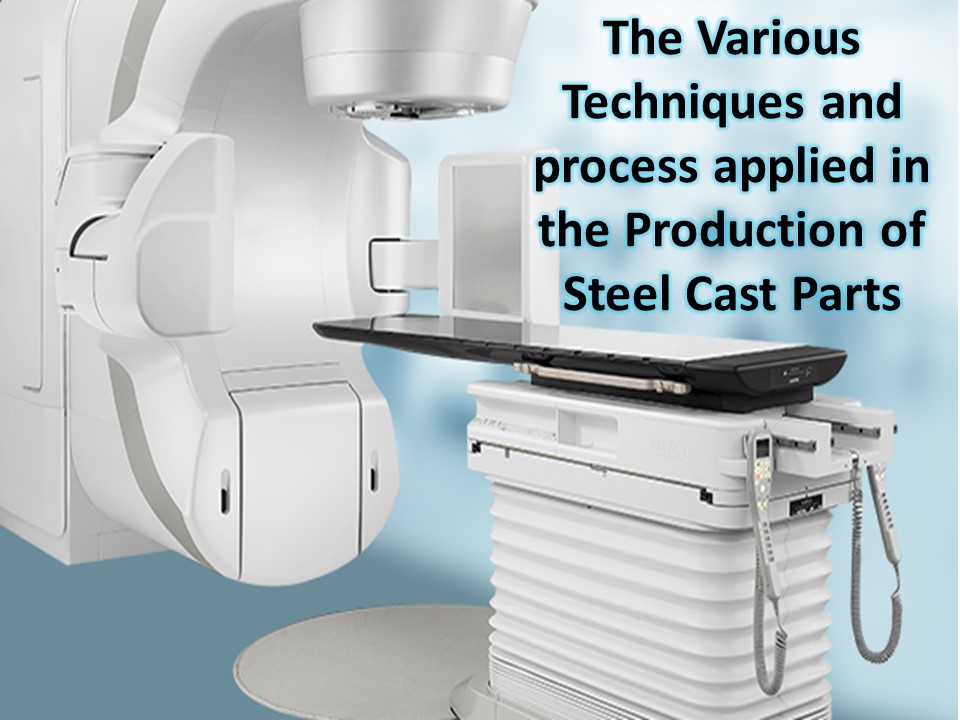6 processes of casting production - PowerPoint PPT Presentation
Title:
6 processes of casting production
Description:
In this article, some processes the most essential point to keep in mind is that the steel casting process is not easy. This is because steel offers significantly more strength than any other type of metal, can be cast with relative ease and is resistant to corrosion. – PowerPoint PPT presentation
Number of Views:4
Title: 6 processes of casting production
1
The Various Techniques and process applied in the
Production of Steel Cast Parts
2
- Casting steel, also known as steel casting, is a
manufacturing technique that includes pouring
molten steel into molds of varying shapes and
sizes to produce a range of steel products.
Casting is often used in situations in which it
is determined that iron castings do not have
sufficient strength or sufficient shock
resistance for the component that is being
manufactured. - Steel casting allows for the production of a wide
variety of items, some of which may be found in
mining, maritime, and automotive machinery. These
products include valves, pumps, engine casings,
turbine wheels, and a number of other various
components. - Casting in steel may be done with either carbon
steel or alloy steel, with the two types of steel
each giving their own unique set of advantages.
Both of these metals are regarded as being of
utmost significance by a number of businesses
that are involved in the building and
construction sector. This is due to the fact that
steel offers significantly more strength than any
other type of metal, can be cast with relative
ease, and is resistant to corrosion.
3
- The Steel Castings manufacturers India are
responsible for the production and distribution
of casting goods made of Ductile Iron and Steel
of the highest quality. Medical investment
castings team have assembled a group of trained
individuals that have a wealth of knowledge in
the Sand Casting process, and they have done it
with the aid of the most advanced equipment
currently on the market. - There are numerous distinct kinds of steel cast
components, and every one of them has its own set
of advantages. The following categories of steel
cast components are the most common
4
- Components Manufactured Through Injection
Molding Injection molding is an excellent method
for mass-producing parts in a rapid and
cost-effective manner. It is possible to make
pieces of any form or size, and the mold may be
easily modified to manufacture the exact parts
that are required. Injection molded components,
on the other hand, do not have the same level of
durability as those created using other
processes. - Foil Casting The method of foil casting involves
heating a metal sheet until it softens, then
swiftly drawing it into a mold after it has been
shaped by the heat. The utilization of this
technology allows for the creation of components
with intricate forms, which would be impossible
to do using other methods. When compared to other
casting technologies, foil casting is more
cost-effective yet, its durability is inferior
to that of injection molding.
5
Let Us Understand The Process Of Casting As Below
- Steel casting offers a number of benefits, but it
is also a procedure that calls for the use of
certain resources. Because of this, businesses
who need a high output of continuous cast are the
only ones that use this method. - First, the metal is molten and then poured into a
tundish, which is a container that has a
passageway leading to the mold that will be used
to cast the steel. Gravity is used throughout the
whole casting process, which begins with the
placement of the tundish at a height of around
8090 feet above ground level. - In order to maintain the continuity of the
operation, molten steel is continually poured
into the tundish. The whole of the process is
managed so that the liquid steel may go through
the tundish without any interruptions. In
addition, the slag and contaminants are separated
using a tundish before being transferred into the
mold. Inert gases are pumped into the opening of
the mold so that molten steel does not interact
with the oxygen and other gases that are present
in the surrounding atmosphere.
6
- 4. The liquid metal travels through the mold at
a rapid pace, and it does not totally solidify
while it is there. - 5. Water circulates around the outside of the
mold, which allows it to be cooled more evenly. - 6. In most cases, the steel casting hardens
first around the walls of the casting, and then
it progressively travels into the interior of the
steel casting. Several distinct sets of rollers
assist the metal casting make its way out of the
mold while it is being moved. Another set of
rollers will straighten the metal cast while the
first set is bending the metal cast. This assists
in shifting the flow of the steel slab from a
vertical to a horizontal direction, which is
beneficial.
7
Bottom Line
- The most essential point to keep in mind is that
the steel casting process is not a easy process,
but rather a process that consists of several
phases, such as the process of making the model,
dissolving the metal, spilling the molten liquid,
condensation the product or part, removing the
metal from the product, and washing the product
or part at the end. In addition, after a
component has been manufactured by Steel Castings
manufacturers India in the casting process, it is
subjected to an inspection step in which its
quality, design, and form are evaluated.
8
Factory Address Survey No. 21, Village-
Biliyala, Rajkot-Gondal National Highway, B/h Pan
Agri Export, Rajkot-360311 91 2825 280301 /
280302
Office Address "Satyam", 35 / Silver Sand, Opp -
Big Bazaar, 150 Feet Ring Road, Rajkot - 360
001, India.
Email Us Mr. R. N. Mavani(Chairman and M.D.) 91
- 98251 07090 info_at_turbo-cast.com































